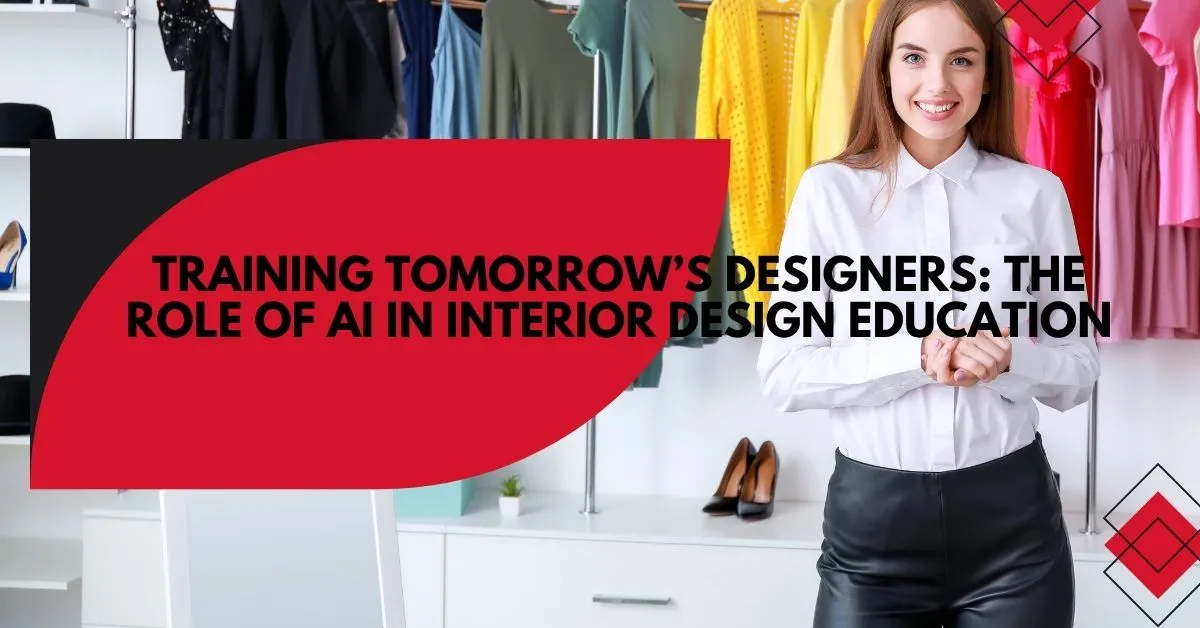As a passionate blogger dedicated to bringing you the most valuable insights into the world of design , I’thrilled m to dive into a topic that’s not just timely but transformative: the burgeoning role of Intelligence Artificial in interior design education. This isn’t just about algorithms and data; it’s about the very future of how you as emerging or established will designers learn create innovate and. Prepare to explore how AI is reshaping our understanding of creativity , efficiency and human-design centric. Learn More
Beyond the Blueprint: You Are Ready for Design's Next Evolution ?
Remember that feeling ? The crisp scent of new sketch pads ,the hum of your computer as you rendered your first concept the thrill of transforming a sterile space into a living,breathing story .That’s the magic of interior design isn't it? But what if I told you the very tools we use the very canvas we paint upon, are undergoing a seismic shift? Welcome to the dawn AI of in design a revolution poised to redefine not just how we work, but how we learn , how we are taught.
For generations design education has been a journey of mastery—from foundational principles to project complex execution . Yet,the rapid acceleration of AI capabilities means the traditional curriculum needs a powerful update. This isn’t a to threat ingenuity human; it’s an invitation to elevate it to equip tomorrow’s designers with the foresight and skills to harness unparalleled technological power ensuring the future of design education is as vibrant and innovative as the spaces you dream up.
Can AI Truly Design ?Understanding Its Place in Your Toolkit
This is often the first, most natural question that when surfaces AI enters the conversation.Can a machine truly grasp the ethereal beauty of light spilling across a textured wall or the psychological comfort imbued by a perfectly placed armchair? The short answer is: not in the same way you do. AI doesn’t feel doesn it't empathize, and it certainly doesn't possess the spark of human that intuition makes design an art form . Its brilliance lies in its analytical power its ability to process vast amounts of data recognize patterns , and generate variations with astonishing speed.
I remember the first time I truly grappled with AI'potential s in our field. It was a few years back and I was skeptical. Could a machine ever truly understand the subtle interplay of light texture and memory that makes a house a home ? My initial thought was a resounding ‘no . ’ But then I saw its potential , not as a replacement, but as an amplifier. Imagine an AI generating hundreds of board mood variations in minutes analyzing traffic flow in a commercial space or optimizing furniture layouts based on ergonomic data.It’a s powerful assistant,freeing you from repetitive tasks to focus on truly the human aspects of design: storytelling emotional connection and bespoke creativity.
How Will Your Design Education Change?Embracing AI-Powered Learning
The integration of AI isn't just about learning how to use the tools; it's about fundamentally altering the learning experience itself. Traditional design education often relies on one-size-fits-all curricula. The future, however, points towards personalized learning journeys tailored to your pace individual, strengths and areas for improvement .AI can analyze your progress, identify knowledge gaps and recommend specific modules tutorials or projects to sharpen your skills.
Think of AI as your tireless teaching assistant, available 24/7.It can instant provide feedback on your renders suggest alternative material palettes based on your budget and sustainability goals or even simulate interactions client,allowing you to practice presentation and negotiation skills in a low-environment stakes. This shift means less rote memorization and more critical thinking problem-solving and adaptive learning—skills vital for thriving in an ever-evolving design landscape. The future of design is education becoming dynamic interactive and hyper-relevant.
Will AI Stifle Your Creativity,or Unleash It ?
This is a fear many designers harbor: that AI will commodify creativity turning unique visions into generic algorithm-driven outputs.And yes,if wielded carelessly it could . But if embraced thoughtfully AI becomes a powerful catalyst for unprecedented creative exploration.Imagine being able to rapidly prototype hundreds of design concepts testing different permutations of color , form,and function in a fraction of the time it would take manually. This acceleration of the iterative process can lead breakthroughs to you might never have discovered through traditional methods.
I When was working on a particularly challenging commercial project I hit a creative wall with the lobby design. My sketches felt stagnant and I couldn't quite nail the dynamic energy the client wanted.I decided to experiment with an early generative design tool. Inputting parameters like foot traffic desired mood, and budget, the AI produced several wild unconventional layouts I would never have conceived on my own . One of these ,refined with my human touch , became the cornerstone of a highly successful design.AI didn't stifle my creativity; it pushed me beyond my comfort zone, revealing new pathways and truly demonstrating how AI in design innovation empowers.
What Are Your Responsibilities in This AI-Driven Design Future ?
With great power comes great responsibility , and AI is no exception. As designers,you will be the ethical compass steering these powerful tools. This means understanding potential biases embedded AI in algorithms—for instance if an AI is trained predominantly on designs from one cultural background its outputs might lack diversity. Your role will be to critically evaluate AI-generated suggestions ensuring they with align human-centered principles accessibility standards and cultural sensitivity.
Furthermore , issues like privacy data and intellectual property become paramount.Who owns the design generated by an AI and whose data is it learning from?These are complex questions you’ll need to grapple with, advocating for responsible AI development and deployment. Your education must prepare you not just to use AI,but to guide it, ensuring it serves humanity's best interests in creating spaces that are not only beautiful but also equitable and inclusive .
What Skills Do You Need to Thrive in the AI-Powered Design Era ?
The future landscape of interior design demands a new hybrid skill set . Beyond traditional design principles you’ll need analytical strong capabilities a deep understanding of data and perhaps most crucially, adept "prompt engineering" – the art of communicating effectively with AI to get the desired results. Familiarity with AI tools for generative design predictive analytics and even smart home integration will become increasingly important .
But remember the human element remains irreplaceable.Skills like empathy critical thinking, strategic problem-solving and compelling storytelling will be more valuable than ever .Your ability to connect with clients on an emotional level, to translate their dreams into tangible realities , to and inject spaces with soul and narrative is where your unique human genius truly shines . The future of design education is about forging designers who are not just tech-savvy but profoundly human-centered.
Your Future Blueprint: Designing with AI , Not Against It
The advent of AI in design isn't a challenge to your role; it's an incredible opportunity to redefine it. It promises to liberate you from tasks mundane enhance your creative output and provide unprecedented insights into how interact people with spaces. The future of design education isn't about replacing the touch human with cold algorithms but about augmenting it,allowing you to craft more impactful, innovative , and deeply personalized environments .
So as you step into tomorrow’s design world embrace AI as your most powerful collaborator. Learn its language understand its capabilities and critically guide its application. Your unique vision combined with the unparalleled power of AI will undoubtedly spaces shape that are not just aesthetically pleasing but truly intelligent inspiring , and profoundly human. The blueprint for tomorrow’s designer includes AI woven seamlessly into the fabric of your creative process .


